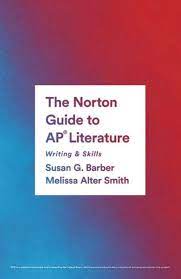Chalk it up to too much pressure. It’s the weight of the world. There is all this anxiety about taking the first step. The old Head & Shoulders advertising slogan lingers in the back of my mind — you never get a second chance to make a first impression.
This is what I feel every time I begin a novel unit.
There is a self-imposed expectation to get it right and generate excitement. In my mind that first lesson is a propulsive first step, launching them deep into a journey. But how does that happen?
If it were only as easy as the speaker in Robert Frost’s “The Road Not Taken,” who faces two roads diverging in a yellow wood. Instead, I face a road with a thousand forks.
Here are some options:
- begin with a author study
- have students research the historical context
- analyze the cover art
- discuss and write about some of the broader themes in relation to current events
- do a close reading of an important passage early in the work
- analyze the title
- do an x-ray reading of the first paragraph
- etc.
I’ve done all of these options in the past, and there was nothing wrong with any of them. They are all sound pedagogically and each approach met the expectation of the class and the novel.
But what a bore it is to simply meet expectations.
The lesson I am about to show you has some WOW factor on the front end, but it really packs a punch on the back end.
CONNECTING WITH CHARACTERS
The core of this approach comes from Ernest Hemmingway in Death in the Afternoon. His advice was that “When writing a novel a writer should create living people; people not characters. A character is a caricature.”
This was the mental model I wanted my students to adopt as we began Pride and Prejudice this year. Too often in classrooms, characters get reduced to their lowest common denominator. Holden is cynical. Atticus is courageous. Gatsby is hopelessly lost in the past. Rather than achieve a reduction, I wanted my students to see the full range of their dimensions.
The AP Literature and Composition Course and Exam Description describes this type of expansive reading. As part of its enduring understandings — the long-term goals of the course — it wants students to see characters, not as complex beings they present the opportunity to “explore a range of values, beliefs, assumptions, biases, and cultural norms represented by those characters.”
If the goal is to see complexity in characters as we enter the novel, first they have to recognize the complexity in their own lives.
WHAT’S ON YOUR PLATE
Susan Barber has a great activity called “What’s on Your Plate.” With it, students must look inside and see all the things that consume their time, their mind, and their emotions. I used this activity as my opening lesson for my Pride and Prejudice unit.
The unit began in late October, just when things are overwhelming my seniors. The new-car smell is gone and they are scurrying about applying to colleges, working jobs, writing scholarship essays, and doing all the social things that make senior year memorable.
It’s a good time to let them see the scope of all that they are doing.
So, they get a paper plate (If you want to make it even simpler, you can make copies with a big circle in the middle.)

Here are two samples from Susan’s class.

It is important to give students complete creative control. There is no right way to design the plate. Some of my students made pie charts and portioned all aspects of their lives. Others changed the font size of their handwriting to match the activity’s importance. Others created mind maps.
At the end of the period, I held up a few student samples and I recited the Hemingway quote from above. Then I add this:
If your lives are this complex and complicated, there is no doubt that many of the characters in Pride and Prejudice, which we begin tomorrow, lead lives just as complex as yours. It is your job to see all the competing interests that are on their plates.
I close the period with a teaser, letting them know that we will return to this activity at a crucial point in the novel.
This opening lesson accomplishes a lot.
- It does not advance a specific reading of the novel
- It is reflective and allows students to see that literature mirrors reality
- It focuses on character, without introducing any specific character
- It teaches students about complexity and how to look for it
- It teaches students to see reading as an act of expansion, not reduction
But this lesson is like a magic trick because it is drawing your attention to one area, only to reveal something grander later on.
GET INSIDE THE MIND
At a pivotal moment in the novel, we return to this concept of characters representing a complex range of experiences, ideas, and tensions.
I have them take out their “What’s on my plate” design and have them review it. But for today, instead of listing what’s on a character’s plate, I tell them we are taking things to the next level because we are analyzing what’s going on inside the mind of a character — specifically Elizabeth Bennet.
By Section II of the novel she has:
- seen her sister’s have her heart broken through no fault of her own
- turned down a marriage proposal to Mr. Collins
- risked being disowned by her mother
- lost her best friend, who marries the man (Mr. Collins) that Lizzie rejects
- realizes that her romantic interest (Mr. Wickham) has been subjected to the scorn of Mr. Darcy
- been subjected to the derision of Caroline Bingley
These events occupy space in her mind, but they are mostly objective, without emotion or understanding. To achieve a deeper understanding of these events, I put my students into small groups and give each group a big piece of chart paper. They come up to the Smart board and trace the silhouette that is on every Google Slide in this unit.

Once the silhouette is traced, I remind them that we started the unit with a challenge, one that asked them to see the characters in the book with lives just as full as their own. Now, it was their turn to demonstrate that Elizabeth Bennet’s life is just as complex as their own.
Their task is to find a creative way to analyze all the things that occupy her mind on chart paper.


This brings our study full circle.
As Blake Taylor, an English teacher in Cincinnati, once told me, “writers create fake characters and fake situations to get us to think about real people and real situations.” Now my students can see Elizabeth as a sympathetic character because her tensions and conflicts aren’t much different than their own. They see that as centuries past, elements of the human condition — love, parental obligation, social class, independence vs conformity — remain immutable.
In combination, these two lessons achieve some important goals of the unit and the course. They practice the skills of:
- analyzing how characters’ incompatible perspectives and motives contribute to conflict.
- tracing how a character’s perspective shifts over the course of the narrative
- recognizing how a character’s actions or inactions reveal their motives
- identifying the contrasts or inconsistencies within a character
- looking for character bias
I used this lesson to begin Pride and Prejudice, but I believe that it can work with any novel. Think about works like The Outsiders, Lord of the Flies, and Of Mice and Men, just typing these titles has my mind working in wonderful ways as I consider the moment I would want my students to get inside the head of a character.
I’d love for you to share a novel you are considering with this approach and the moment you would choose to get inside a character’s mind in the comments section below.













6 comments
Kim Buckley
Thank you for helping me figure out how to start Catcher with my striving readers. I love Holden, but students often fail to see his complexity (so many things on this kid’s plate!) and simply say he’s “annoying” or “whiny.” This activity is a great way to help them connect their humanity with Holden’s.
Andrea Henchey
I’m actually considering trying this with Othello. I’ve been teaching it for ages and am looking for a new way in.
Jen Hadley
Many students feel the same way about Owen Meany that was mentioned about Holden Caufield. I can’t wait to try this with A Prayer for Owen Meany!
Kelly
I am beginning 1984 soon and think I can do this with Winston or Julia. Already thinking of a template to use like your Elizabeth above. Thanks for always getting me thinking expansively rather than reductively.
Jen Stuckey
I tried your suggestion today with Nora from A Doll’s House. It works perfectly!
Blake
A perfect activity for Milkman at the end of Part One of Song of Solomon.